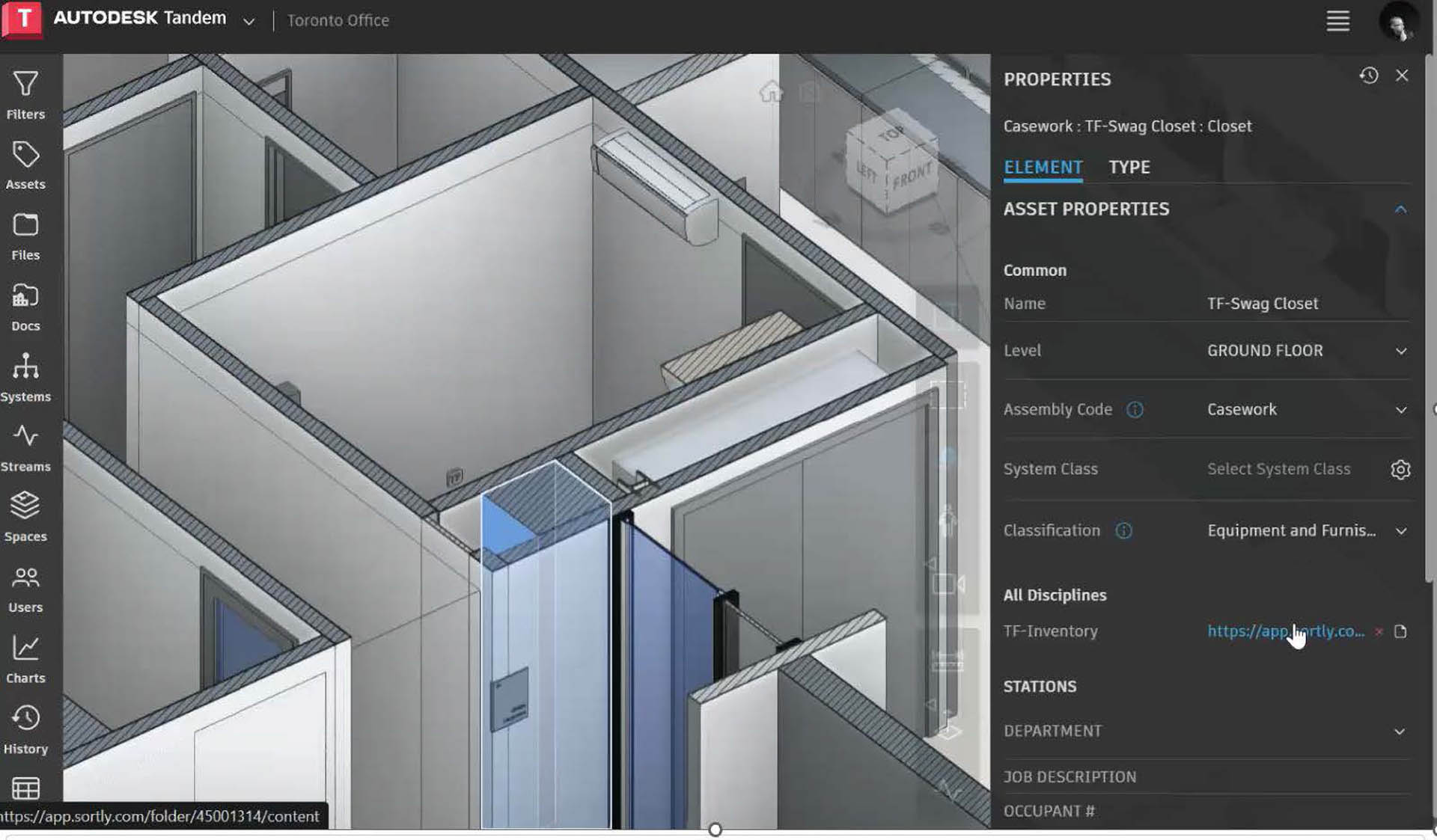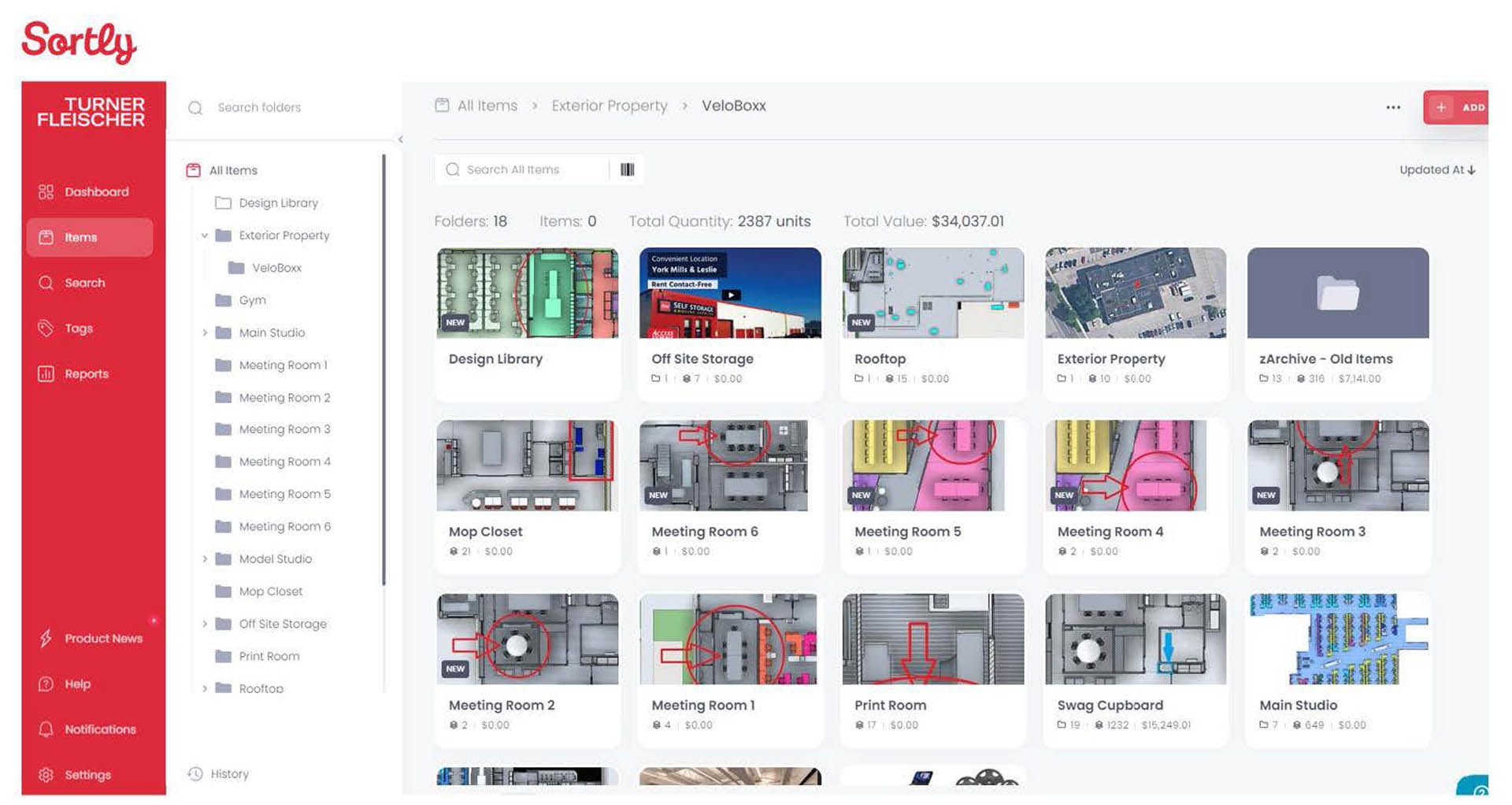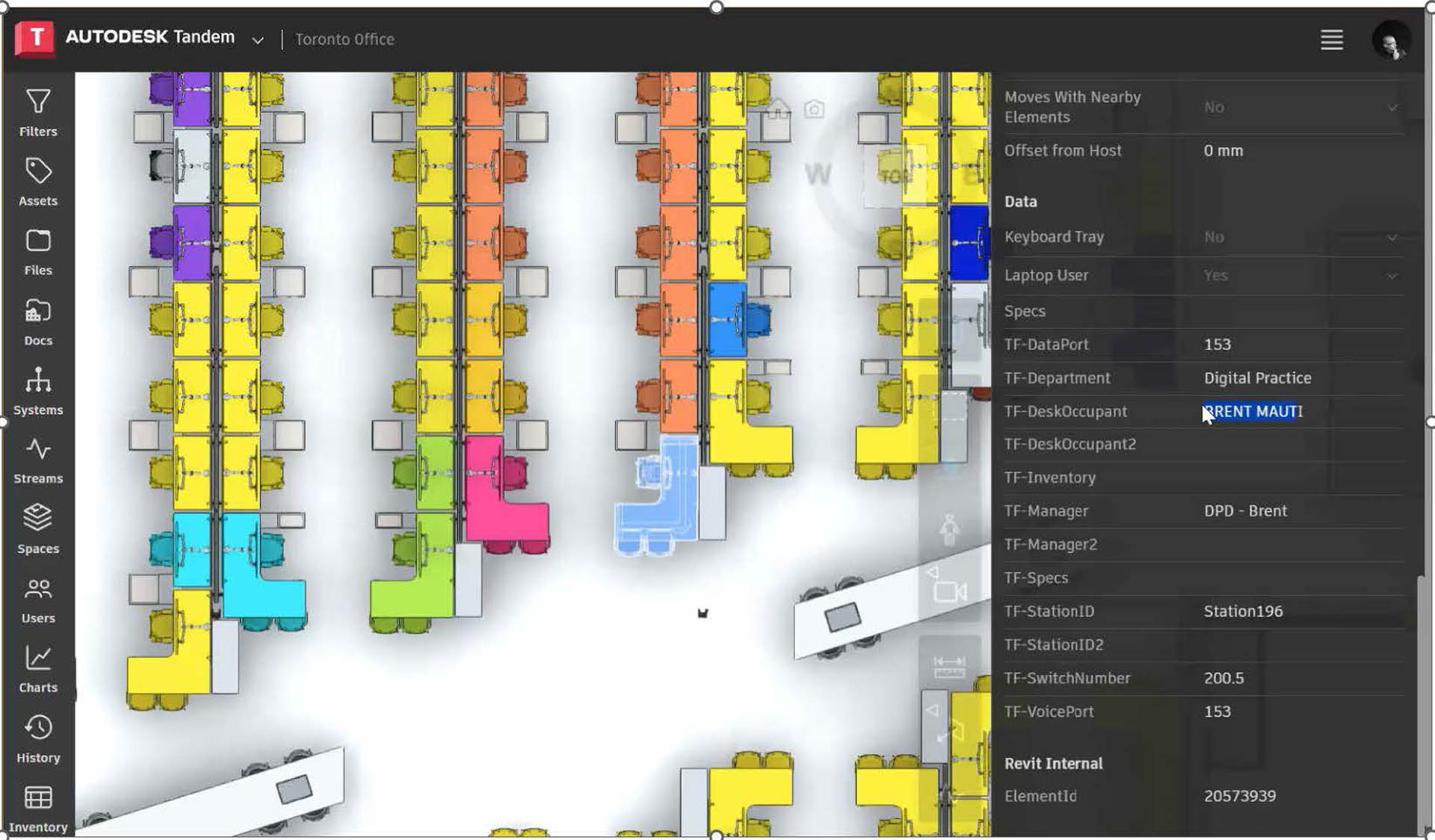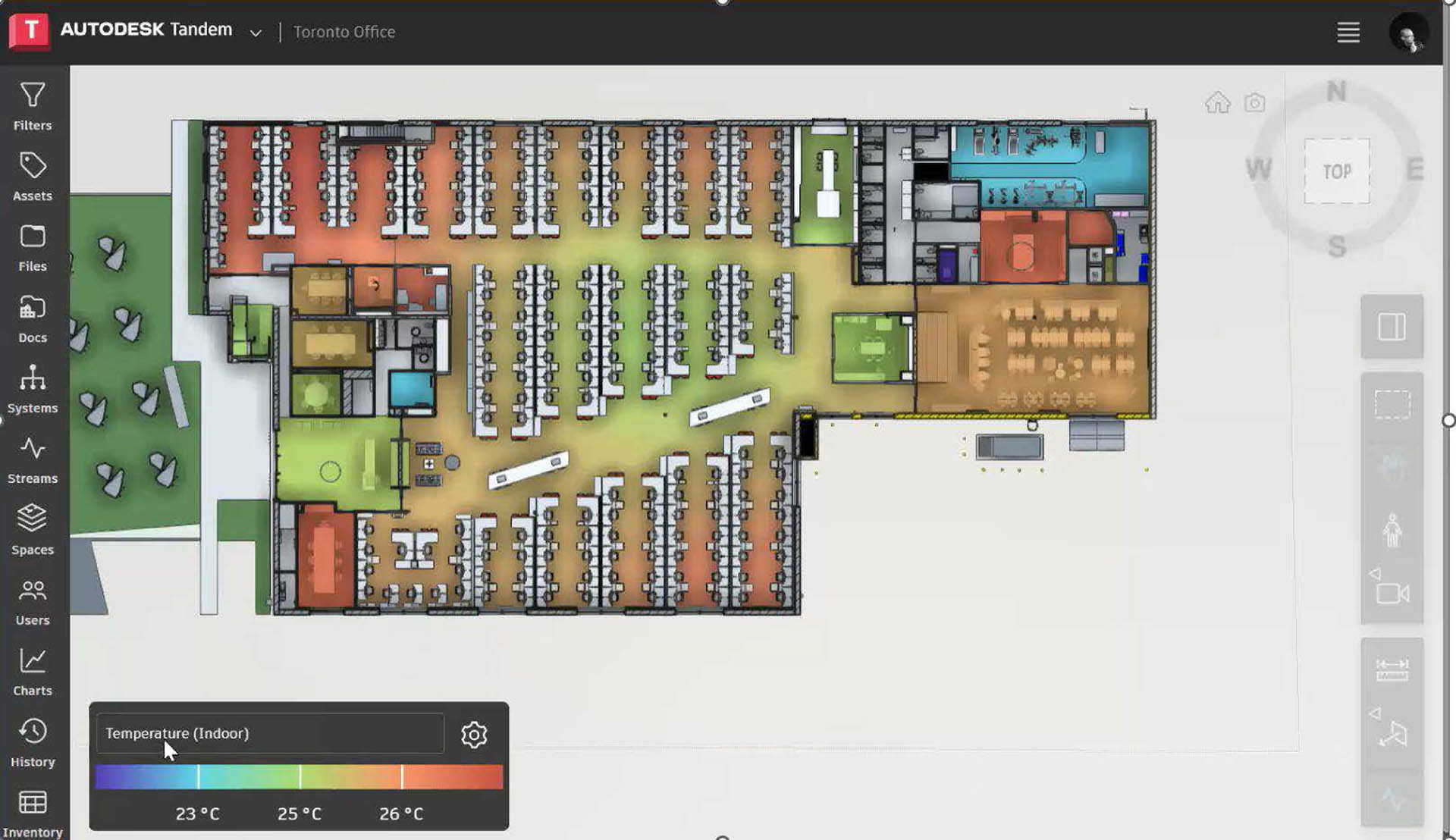The Toronto-based practice has used Autodesk Tandem to develop a digital twin for its open plan studio. Could this lead to a digital twin service for clients?
Digital twins got very little airtime on the main stage at Autodesk University this year, but AU is about so much more than the keynotes. There were plenty of digital twin presentations throughout the event, with Tandem, Autodesk’s Revit-centric digital twin solution, front and centre.
AEC Magazine caught an excellent presentation from Brent Mauti, chief technology officer at Turner Fleischer Architects about the development of a digital twin for the practice’s new open plan studio in Toronto. The twin has delivered huge benefits, helping Turner Fleischer get the most out of its space, enhance wellness and bring new efficiencies to facility management.
Mauti, a highly engaging speaker, shared the journey of how the firm started with a Revit model and transformed it into a digital twin complete with IoT integration.
For the architects in the room, his presentation will surely have been an inspiration for practices looking to explore new revenue streams through additional services to offer to clients.
Find this article plus many more in the November / December 2023 Edition of AEC Magazine
👉 Subscribe FREE here 👈
For monitoring air quality, IoT sensors capture temperature, humidity, pressure, CO2, particulates and more every five mins. Data can be visualised though a Microsoft Power BI dashboard or live streamed into Tandem which Mauti describes as a game changer.
Tandem can be used to visualise heat maps of the sensor data to understand conditions at any point in time, as Mauti explains. “I swear every morning when I open up my computer, I pull up the temp map, and I either smile or I go, something’s wrong. What do we do?”
“When I see temperature fluctuations, humidity fluctuations, the facility manager and I can analyse. Is there a problem? Is there something we have to change? Our meeting room number three is perpetually hot, we’re on it!”
At the moment air quality needs to be actively monitored, but can you put any alerts on any of the sensors so if it reaches a certain level, it informs you? “I think that’s a feature request,” says Mauti. “So alerts are hopefully coming soon.”
For Turner Fleischer, hybrid working post pandemic has thrown up a whole set of challenges to ensure the space is being used effectively. The company uses Tandem for desk management to help ensure the right people and technology are available at each physical location.
By adding metadata to objects within the Tandem model, such as the department of a person, the manager of that person, who the person is, the firm now has the ability to experiment with the best location for staff when working in the studio.
“Let’s see everybody based on department, so we colourise by department, we want to see where do I have clumps of colour together? Am I encouraging collaboration?” At Turner Fleischer, Tandem can even be used to help optimise IT networks. As Mauti explains, IT managers want similar traffic on each network switch, “I can now, at a glance, do an analysis and understand do I have balance? Was one heavier than the other? All that just based on metadata.”
What struck us about the project was the level of detail that resides within the digital twin, particularly when it comes to asset management. Almost every item within the building – and we mean everything – is referenced within Tandem. This includes manuals and maintenance records for building objects or office equipment – printers, smart windows that change colour, water coolers, coffee makers, bike storage, gym treadmills, even green walls, as Mautio explains, “There’s how to maintain the leaves. What trees do we have? What colour are they going to become? How much water do they need? Are they gonna smell? How long should the fan be running? All of this information is associated to that one little model element that’s a rectangle.”


Manuals and maintenance records are stored in SharePoint, and Tandem simply acts as a gateway to that information. The facility manager or other stakeholder can virtually walk through the studio in first person view and interact with any of the elements to quickly access the required information.
Tandem is even being used to help track inventory, by linking to a third party service called Sortly. “It allows us to track the assets which we would never model, like stationery, swag, printing supplies, free-weights in our gym, kitchen supplies, etc.” says Mauti.
Management of stationery is done in real time as staff are required to use the Sortly mobile app, “I walk into the room, just scan a QR code, grab three of them, boom, boom, boom, done,” says Mauti.
Developing the Tandem digital twin has been a huge learning journey for Turner Fleischer, but the benefits can’t be overstated. One delegate asked if the practice is looking to offer this as a service to clients and Mauti admitted it’s a real possibility, “I present it to open eyes, the clients, and then to say, hey, we can be there for you, let’s design the solution,” he said. “This is a workable solution for a single studio office. Awesome. You give me five studios, you give me fifteen stores, give me a campus of university buildings. All possible — it just has to be built properly.”








